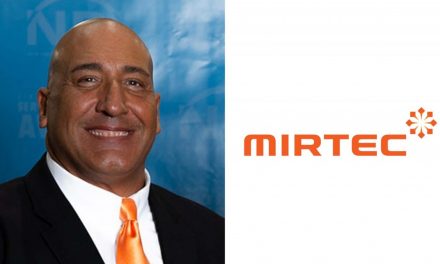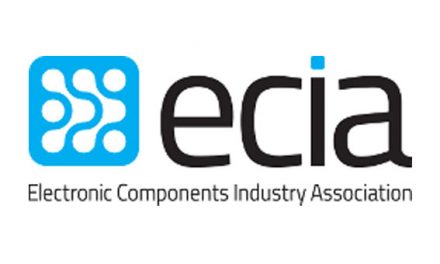Technology and Trade: What to Watch for in 2020

Originally published on TTI’s MarketEye Blog
By Murray Slovick

Economist John Kenneth Galbraith once proclaimed, “The only function of economic forecasting is to make astrology look respectable.”
And physicist Niels Bohr, commenting in the pages of the Bulletin of the Atomic Scientists, said of trying to divine what is to come: “It is very difficult to predict, especially the future.”
Still, as we begin 2020 it might be useful to pick out some recent trends that are likely to continue and developments which might be the forerunners of things to come.
3D Printed Components Move Closer to Commercialization
3D printing – also known as additive manufacturing due to the fact that objects are printed by adding material layer by layer – has the potential to allow printing of passives buried in the body of a PCB, resulting in more effective use of the PCB area for other devices and a reduction of the total area. Also, an additive manufacturing solution with layer times measured in seconds could allow for fabrication of prototypes and final designs at a fraction of the usual time and cost.
In theory, passive components fabricated using the additive approach could increase the reliability of the circuitry as a whole, as there would be no need for solder joints. This technology also grants more choices for substrate selection, ranging from flexible, to rigid and transparent, to opaque. This can result in development of deformable and customizable electronics.
Capacitors, Inductors and Resistors
A printed capacitor, for example, could be fabricated in a way where the bottom conductive layer is first printed on the substrate, then the dielectric layer and the top conductive layer are subsequently printed on top of each other. During the printing process, the bottom conductive layer would be sintered first before the printing of the dielectric and the top conductive layers, so as to prevent cracking of the bottom conductive layer and absorption of the dielectric layer into the bottom conductive layer.
In 2019. Israeli 3D printed electronics company Nano Dimension announced development of printed circuit boards (PCBs) with 100 percent 3D printed embedded capacitors using its DragonFly electronics additive manufacturing system. While this technology proof of concept is in its early stages, Nano Dimension was able to manufacture capacitors using the same dielectric and metal inks implemented to create 3D printed PCBs. This enables the integration of the two parts in one print job, saving space and allowing electronics engineers and manufacturers to avoid a potentially time-consuming and complex assembly process.
Test results showed that the DragonFly system achieved repeatability comparable to that of traditional processes in short-run manufacturing; repeatability tests of the 3D printed capacitors showed less than one percent variance between the components. The results were based on over 260 tests with 30 different 3D printed capacitor dimensions.
The company also tackled 3D printed inductors. Simply put, an inductor generally includes an insulated wire wound into a coil around a core. The inductor creates a magnetic field when electric current flows through it. Using dielectric material as the core, Nano Dimension built up multiple stacked layers of coils using a Gerber file or a 3D CAD model with each circular layer connected with vias.
Similarly, printing a resistor could start with printing two separated conductive lines on the substrate before a resistive layer is printed in between. The ink used to print the resistive layer would have much lower electrical conductivity compared to that for the conductive lines. It could be purely insulating, or a mixture of conductive particles with insulating particles. After the printing process, the resistor layer and the conductive lines would be sintered together.
Researchers at Colorado State University and Rice Lake Weighing Systems have published an article titled “Characterization of resistors created by fused filament fabrication using electrically-conductive carbon black and graphene-based filament.” Consumer-grade desktop fused filament fabrication (FFF) printers were employed.
The authors noted that due to the nature of the FFF process, the resistors created using graphene-based filament are non-homogeneous devices; thus their resistivity varies depending on their build orientation and FFF process parameters. An FFF printer with two extruders and associated software was used to build a number of resistors for their tests.
Remaining Hurdles
Among the technical hurdles that need to be overcome in 3D printing of electronics is the high energy consumption when contrasted with traditional manufacturing systems. What is more, the printing process itself can be relatively slow, and it is crucial to have the optimal amount of materials deposited onto the substrates during the printing process as this will affect the electrical properties.
For instance, during the fabrication process of a printed resistor, the deposited amount of conductive materials affects its resistance. Too much deposition of materials results in lower resistance than the required value, while too little deposition of materials results in higher resistance which potentially can cause the resistor to overheat.
One other not-so-little obstacle to commercialization of 3D printed passives: the infrastructure for assembling various electronic devices to 3D printed electronic structures does not yet exist.
Since 3D printed electronics are not limited to conventional planar packaging structures, the resulting component mounting surfaces may be in any orientation. The required component assembly tools must therefore be able to place and join both functional and passive devices at arbitrary orientations in three-dimensional space.













